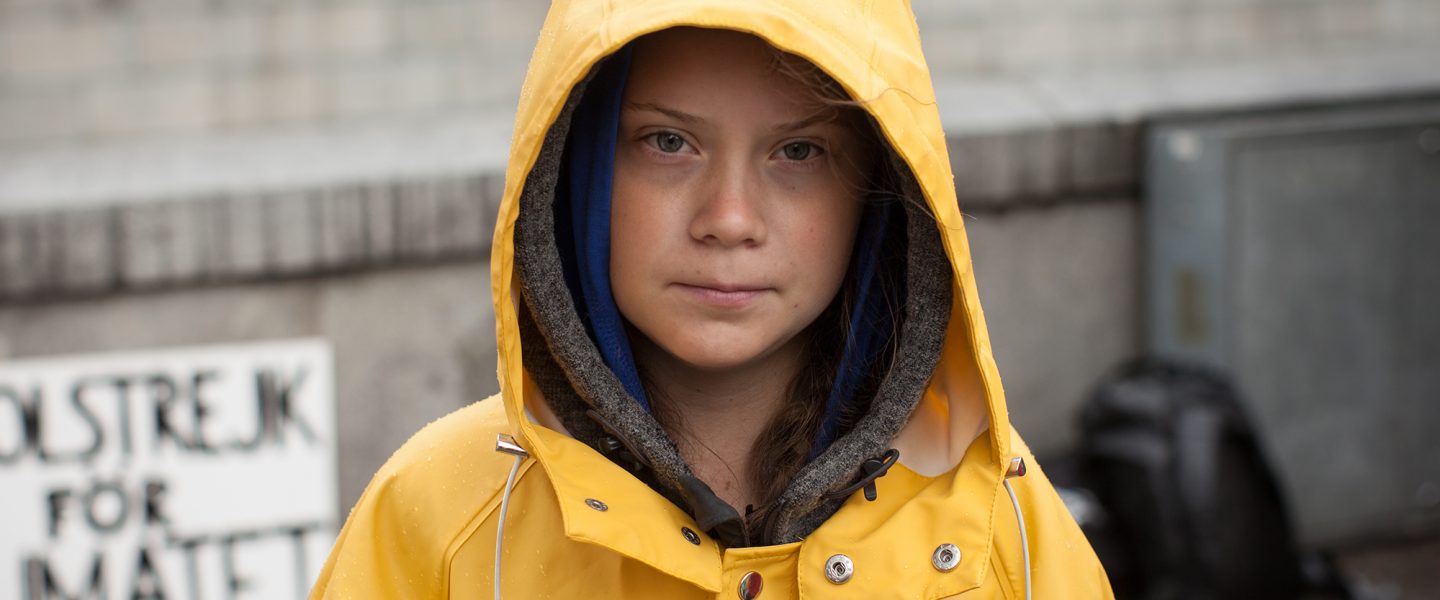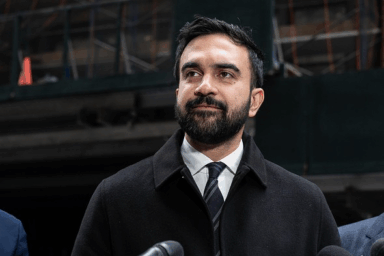Activist Greta Thunberg does her thing. The media loves it. The environment itself? Not so camera-ready.
|
Listen To This Story
|
Last month, climate activist Greta Thunberg was arrested in Lützerath, Germany, causing an international media frenzy as she was carried away by police with a smile on her face.
The protest was in response to the expansion of the Garzweiler open-pit lignite coal mine. Though European energy company RWE started the expansion in 2017, it heralds the continuation of the project as a way of mitigating the heating crisis caused by the Ukrainian-Russian war. Lignite is the most polluting form of coal, which is in turn the most polluting fossil fuel, and every year Europe is responsible for 50 percent of the world’s production and consumption of lignite.
For activists, ensuring that RWE is not successful in its efforts to expand the coal mine is crucial. The mining goes against Germany’s goal of phasing out coal electricity production by 2030, and undermines the Paris Climate Agreement, which aims to keep global temperatures under 1.5 degrees Celsius. For the past two years, climate activists have occupied some of the abandoned homes around the mine, since production could not begin until everyone was cleared out. The most recent protests came at a time when just a few activists remained in town.
Beginning on January 11, German officers, wearing riot gear and carrying pepper spray, demanded that activists stand down, eventually arresting some, including Thunberg.
The media pounced immediately. Images of Thunberg catapulted the protest into the spotlight. But it seems the only reason the mining company’s activities made headlines was because the 20-year-old icon of climate activism was being arrested for the first time.
“Nothing has worked. It’s now the eleventh hour and I feel terrified for my kids and terrified for humanity. I feel deep grief over the loss of forests and corals and diminishing biodiversity.” – Peter Kalmus
Now, the last two protesters have been forced out of a tunnel in Lützerath, and construction of the coal mine will continue in a few weeks. Thunberg is out of police custody and I am left wondering if the protest helped the climate movement, or if focusing too much attention on Thunberg distracted from the cause that activists have fought for in Lützerath over the past six years.
Arrests during climate protests are not, obviously, unique to Thunberg’s appearance. After the 2022 Intergovernmental Panel on Climate Change (IPCC) report came out, which said that greenhouse gas emissions need to top out by no later than 2025 to curb the most severe effects of climate change, over 1,000 scientists around the world protested and were arrested in an attempt to raise attention to the climate crisis. Last fall, Indian climate activist Ajit Rajagopal was arrested by Egyptian security forces 24 hours into an eight-day walk from Cairo to Sharm el-Sheikh, where the COP27 UN Climate Summit was being held. And on January 19, climate activists in Uganda were arrested while protesting a proposed $2.5 billion dollar crude oil pipeline project that would run through the country to Tanzania, releasing 34 million tons of carbon emissions annually.
Though people all over the world scream, set themselves on fire, and die while protesting climate change, they are often only briefly mentioned in the news cycle before journalists move on. But, there is constant, somewhat obsessive coverage of Thunberg’s every move. At times the coverage is understandable: Since she began sitting outside the Swedish Parliament every Friday in 2018, demanding her country do more to combat a warming world, she has been named one of Time’s 100 most influential people, one of Forbes’s 100 most powerful women, and been nominated for four Nobel Peace Prizes by bringing global youth strikes to center stage. But Thunberg cannot curb CO2 emissions on her own, and she should not be the only one media outlets focus on.

Thunberg seems to have transcended her original role as a climate leader and turned into a celebrity. Last December, she got into a Twitter exchange with Andrew Tate, a former kickboxer turned social media influencer. After Thunberg replied to his tweet about climate change, Romanian police were able to track down the entrepreneur, who was then arrested on sex trafficking charges. Thunberg reliably goes viral, which is great for media outlets. But what happens if people grow tired of her, or her message gets clouded by coverage of, say, her dating life? Will the climate crisis lose some of its appeal for the media without a popular face to slap on it?
People often shy away from subjects like the 42,000 species at risk of going extinct, or the fact that global temperature rise requires sustained attention on the industrial polluters most responsible for emissions. Journalism is a powerful tool, but by focusing so much attention on Thunberg — on making it a celebrity story — the media is missing a chance to focus on the problems, and the solutions, in what might feel like the end of the world.
The other day a friend told me, “Young people need to care about the news and stay up to date because we are the future. As we get older, we will be the ones responsible for solving the current issues that we deal with today. How can we fix problems if we don’t even know they exist?” I am afraid for my generation, and for those that come after me, if we don’t know the scope of the problem, and of what it might mean for climate activists if Thunberg is the only one journalists focus on.
Gretta Thornburg Arrested #grettathornburg #arrested pic.twitter.com/kTTImypv53
— Social Media News And Entertainment (@SocialbookMedia) January 17, 2023
Speaking about the lack of media coverage, climate scientist Peter Kalmus wrote in an op-ed for The Guardian, “Nothing has worked. It’s now the eleventh hour and I feel terrified for my kids and terrified for humanity. I feel deep grief over the loss of forests and corals and diminishing biodiversity.
“But I’ll keep fighting as hard as I can for this Earth, no matter how bad it gets, because it can always get worse. And it will continue to get worse until we end the fossil fuel industry and the exponential quest for ever more profit at the expense of everything else. There is no way to fool physics.”
There is a saying among climate activists: There’s no “Plan B” for another planet.
In a time where natural resources are rapidly decreasing, where people who are the least responsible for climate change are the ones who will most intensely feel its repercussions, it is vital for journalists to focus on the most pressing issue of our time. But it seems that the media indulges its bias toward celebrity and misses the forest for the trees.




